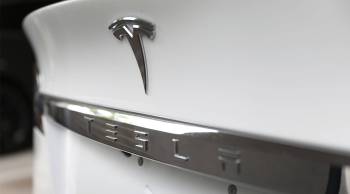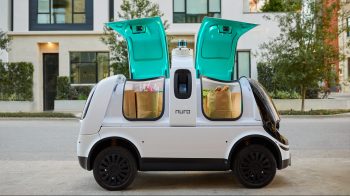A driver’s defense of self-driving cars
People love to drive.
We’ve been driving for pleasure in America since the late 1800s; sightseeing was cited as one of the many reasons the government should fund the federal Interstate System when it was first proposed in the late 1930s.
And even though self-driving cars are on the increasingly near horizon, people who love to drive are probably going to resist the idea. Plenty of people are already wary of the idea of turning control over to a car. University of Michigan researchers conducted a survey last year and found that most people (in the U.S., the United Kingdom and Australia) had either a positive or neutral impression of self-driving technology, but that most were “moderately concerned” about driving or riding in cars that can mostly drive themselves — they would still have steering wheels and pedals, for example, and drivers could take over at any time.
And the majority of respondents were either “very” or “moderately” concerned about riding in so-called Level 4 autonomous cars, where the car makes all the decisions about driving and the driver never intervenes.
In sum, we’re not ready. Yet. And those who love to drive will be the hardest to convince: Where’s the fun in that?
Or maybe we won’t be so hard to convince. I’m one of those people who loves to drive. I’m the kind of slightly masochistic driver who hunted high and low for a car with a manual transmission, even though I live in the San Francisco Bay Area, which has the third worst traffic congestion in the country. I even went to racing school so I’d know how to drive it properly.
And I can’t wait for self-driving cars.
Part of the reason is traffic congestion — most proponents of autonomous cars believe that when cars can eventually make the decisions, traffic will be dramatically reduced. Computers, after all, aren’t emotional, territorial or competitive. They’ll be able to handle messy merges and four-way stop signs better than humans.
And many believe that as fully autonomous cars — the kind capable of picking you up, taking you to your location, dropping you off and heading on their merry ways — actually become common, individual car ownership will decline quickly. Think about it: I’m out of town for a week, and my car is just sitting there at the airport. What a waste! It could be out driving people around, and there’s no need for it to be my car at all. Imagine a world where we all subscribe to rides on demand from a fleet of self-driving cars and, well, you have Uber’s most feverish dream, but that’s another conversation (sorry, Uber drivers!).
Then there’s safety. Again, computers don’t drive drunk, speed, tailgate, get road rage or fall asleep at the wheel. And there’s the possibility that people who can’t currently drive themselves because of injury, illness or age will have mobility options they don’t have now.
But the biggest reason I can’t wait for self-driving cars is time and annoyance. I love the idea of getting work, email or personal business done while a car is handling the driving. And I love the idea of journeys that aren’t filled with stress, road rage and dangers posed by other drivers.
I’m buying what self-driving cars are selling.
Now, that doesn’t mean I never want to drive again, and I don’t think it’s an all-or-nothing proposal. In the short term, we’ll have semi-autonomous cars that can do some driving for us. The amount of control they’ll take will only increase over time, as a way to sort of ease us into letting the car take over.
And in the slightly further-out term, we’re likely to have a new kind of hybrid: one that can take control when we need it to. I’m a big fan of the idea of self-driving zones, especially in congested areas like the San Francisco Bay Bridge. Perhaps instead of Fast Track lanes, we could have self-driving lanes, where we turn the wheel over, get some work done and cruise through the toll plaza unperturbed.
In the real long term, when a fleet of driverless cars picks us up when we need them, I hope I can keep my old fashioned car with its manual transmission in a garage somewhere. Then I’ll take it out to drive it for fun in manual zones or out in the country, where I like to drive it now. Because I’ll still love to drive, and I suspect I’ll love it even more when I only do it for fun.
There’s a lot happening in the world. Through it all, Marketplace is here for you.
You rely on Marketplace to break down the world’s events and tell you how it affects you in a fact-based, approachable way. We rely on your financial support to keep making that possible.
Your donation today powers the independent journalism that you rely on. For just $5/month, you can help sustain Marketplace so we can keep reporting on the things that matter to you.


















